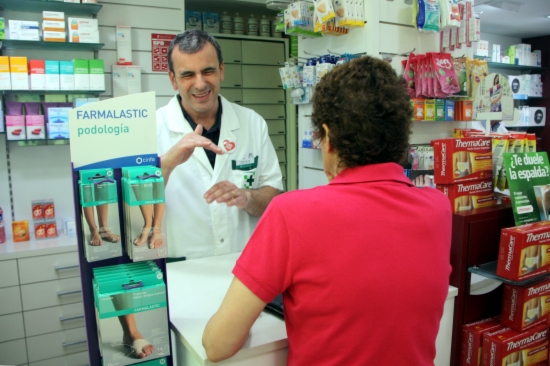Prices fall in Catalonia in July and set the annual inflation rate at 2.1%
According to a figures released by the Spanish Institute of Statistics (INE), Catalonia’s annual inflation rate fell from 2.6% to 2.1% between June and July. This is the second lowest annual inflation rate that Catalonia has experienced this year, with the lowest being during April when the figure was 1.8%. July’s annual inflation rate in Catalonia is higher than that of the whole of Spain, which is set at 1.8%. The main reason for this fall on last year’s results can be explained because of the lower rate of increases in electricity prices (compared to last year’s rise), as well as the end of the statistical effect of the pharmaceutical co-payment, which was implemented in July 2012 and significantly raised the consumer price of drugs.

Barcelona (ACN).- On Tuesday, figures released by the Spanish Institute of Statistics (INE) have revealed that Catalonia’s annual inflation rate dropped from 2.6% to 2.1% between June and July. So far this figure is the second lowest annual inflation rate that has been recorded this year; the lowest was in April which was 1.8%. July’s rate in Catalonia is higher than the rate of Spain as a whole. In the whole of Spain, the annual inflation rate passed from June’s 2.3% rate to July’s 1.8%. The fall on last year’s figures can be attributed to the end of the statistical effect of the pharmaceutical co-payment, which was implemented in July 2012 and significantly raised the consumer prices for drugs. Another factor that contributed to this fall is the price of electricity, which increased at a lower level than it did a year ago. Core inflation, which does not take into account the prices of more volatile products such as petroleum and fresh food, had a rate of 1.7% for July in Catalonia, while it was 2.0% in June.
Pharmaceutical co-payment
The commodity that has most contributed to the fall in the rate of annual inflation is medicine. This is due to a co-payment launched in July of 2012 by the Spanish Government, in which citizens have to pay for a greater share of the price of prescribed drugs. When the new system was implemented, the price of pharmaceutical products was significantly raised. A year ago, they were 13.7% more expensive than in July 2011. However, since the price increase no longer has an effect on the statistics of the last 12 months (since it happened 13 months ago), medicine prices not only had a lower price increase but they even showed a 1.2% price drop, almost 15 percentage points lower than the previous year.
The other market basket that has driven down annual inflation has been the property sector, which incorporates electricity prices. The price of electric power was up by 4% in July of last year; meanwhile this July the increase was only 1.2%. The transport sector has also helped to bring down the rate of inflation as a result of the price of fuel. The increase in fuel prices this July has been lower than last year. The annual rate of inflation of the market basket was 1% this July, while for last year it was 3.8%.
Price increases
While medicine, electricity and transportation have led to a low inflation rate being achieved, the types of product that have had the opposite effect have been food and non-alcoholic beverages. This July these goods had an annual rate increase of 4.3%, while for the same period last year this figure was 1.8%
Summer sales
Regarding monthly prices in July, prices have fallen compared to June with regards to clothing and footwear, as happens every year, due to the summer sale period that exists in the sector. Catalonia has witnessed a 13.1% drop in prices compared to the previous month.
Upcoming statistical effects
This July, the statistical effect of the rise in medicine prices, as a result of the co-payment system launched in July 2012, has been completed. In the coming months there will be further changes as the effect of the increase in VAT, that took place in September 2012, following a decision by Spanish Prime Minister Mariano Rajoy, will come to an end. This October the increase in university tuition fees will have also been in place for a year. When these statistical effects are over, inflation is expected to be at a rate below 1% by the end of the year, according to the Spanish Government’s macroeconomic framework.